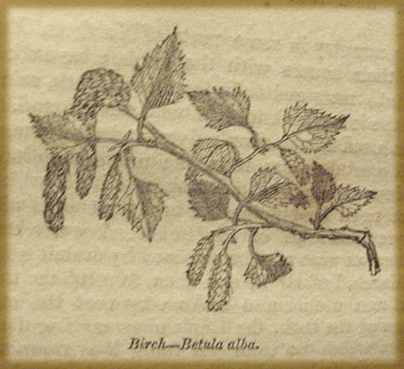
Properties of Timber: Birch
The Common Birch (Betula alba) is not a very good timber tree, but sometimes it thrives where no others trees will grow, and so it is worth knowing about the properties of its wood.
It is used for small turning jobs, as mop-handles; the twigs are used as brooms. In the highlands of Scotland, where there is no pine, the birch is used for other things too. The stronger stems are rafters, wattles of the boughs are the walls and the door; it is also used for shests and boxes. The Highlander will also use it to form his spade, his plough, and if he has one, his cart and his harness. The cordage is withies of twisted birch. These birch ropes are as durable as hemp. They are prepared by twisting the bark when it is still green.
In ancient times, canoes were made of the bark of birch, and it is still used for this in the northern parts of America. The species used for canoes by the Indians and French Canadians is called the canoe-birch, Betula nigra. In good soils it reaches a height of seventy feet. The weight of a canoe for four people is about fifty pounds.
A weak but not unpleasant wine may be made by draining the sap in March and fermenting it.
The wood of the birch in Glengarry is cut into staves, for making into herring-barrels. It is a good wood for the turner, being light, compact and easily worked. It is also used for undressed palings and gates, such as are used in the sheep counties.
It is not very durable but it is cheap and grows where other trees will not. Its roots go entremely deep. It makes very good charcoal.
wood-cut:

summarised from "The Library of Entertaining Knowledge - Timber trees" (1829), pub. Charles Knight, Pall Mall.
ND, habitat21
big turbines
small turbines